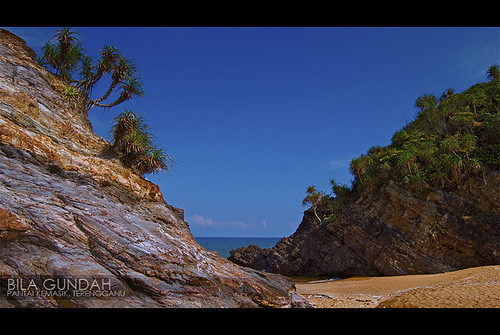Inspired by a certain photos I've seen, I have ever since been trying to get the similar result only to discover more ways of doing it. As it has been, the general appearance of photos that I took were inconsistent due to the experimental post-processing methods I've discovered.
I've known about HDR (high dynamic range) processing technique at about the same time but I was always turned down when I saw lots of overcooked samples done by other enthusiasts. Apart from it, as I attempted to produce an HDR-processed image by using the software that I always used when processing my photos, my old workhorse just couldn't process it. I'd always thought, it must be that because this is an old horse. I was wrong.
Though it's true that my ever trusted PC is old enough with lesser capabilities compared to every other PC that I touch nowadays, the failure to process an HDR image in CS2 is due to the EXIF data embedded in the 'single RAW' technique I adopted to create the HDR image. HDR processing requires same images of different values in order for the software to merge these images. As I was using the single RAW technique to produce a set of images with different values, the Adobe Camera RAW embedded the same EXIF data for all those images thus the incapability of the built-in HDR in CS2 to read the different values for each of the photo.
The other option, and actually is the best (according to the findings on the net) to produce HDR images is by using PhotoMatix. I hesitated for so long to install it for some reasons - the computer being old and almost full is a part of it but being a reason is always used in any way as a justification to delay a thing.
It has been years and finally tonight, to heck with all those reasons, I decided to install it. I did and there I was fascinated with it and at the same time regretted that if only I installed it years ago.
Anyway, it's still an immature attempt and I am yet to understand the parameters within it. This is my second try, a set of photos that show the original photo, the one that has been through tiring and difficult methods to get a balanced exposure by using merely the CS2 and lastly the HDR attempt. I am not fully satisfied yet with the result but definitely I can foresee a major leap in my image processing for the years to come.
But first, I have to get the watermark removed first. That is by getting the license guys, not by the harder way of image manipulating.



No comments:
Post a Comment